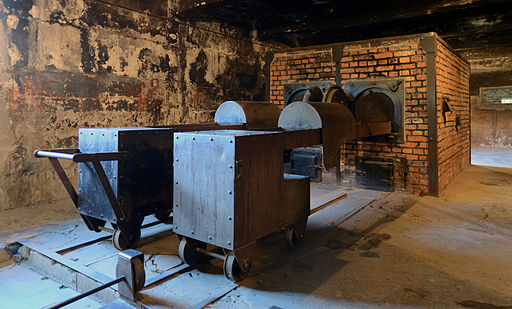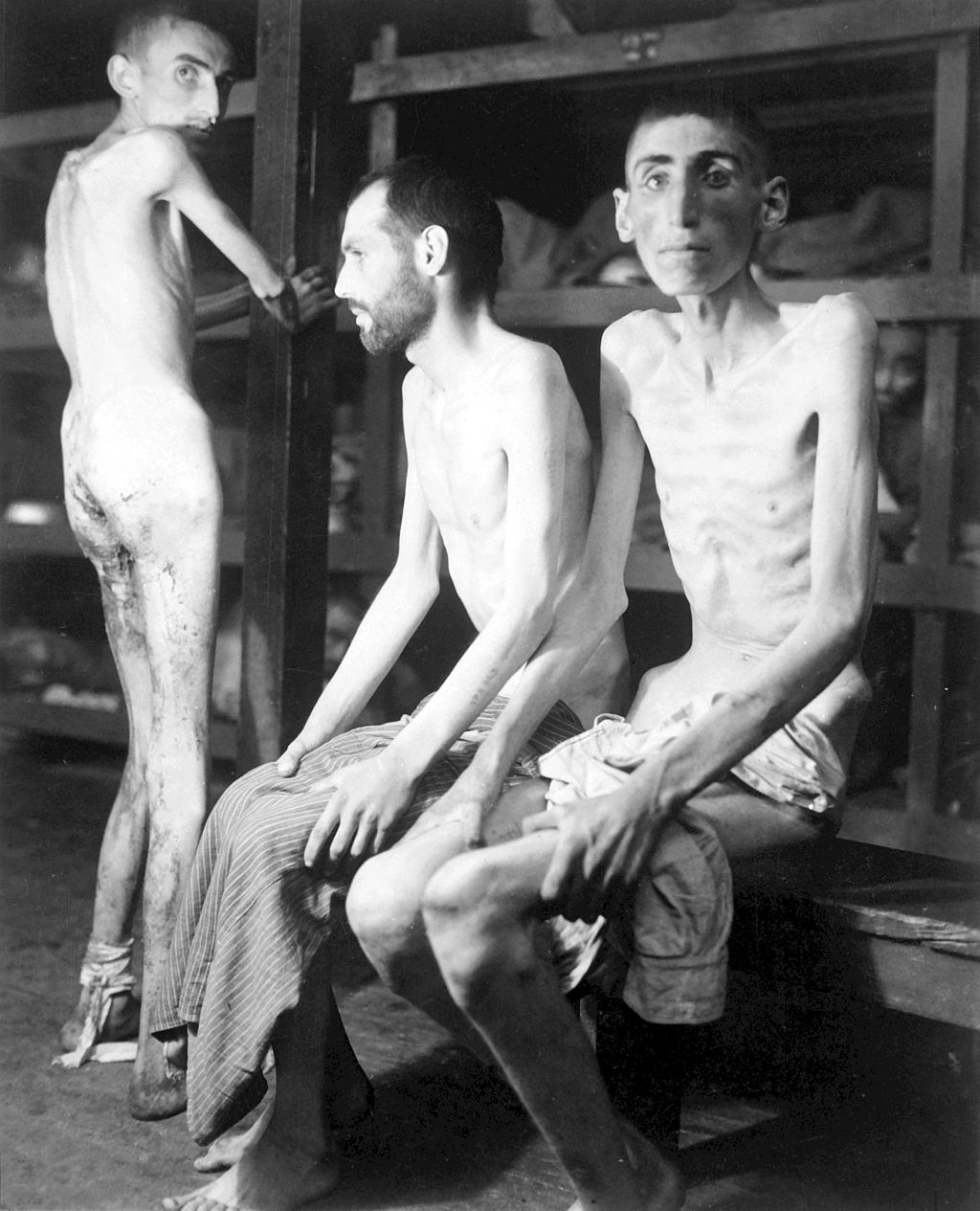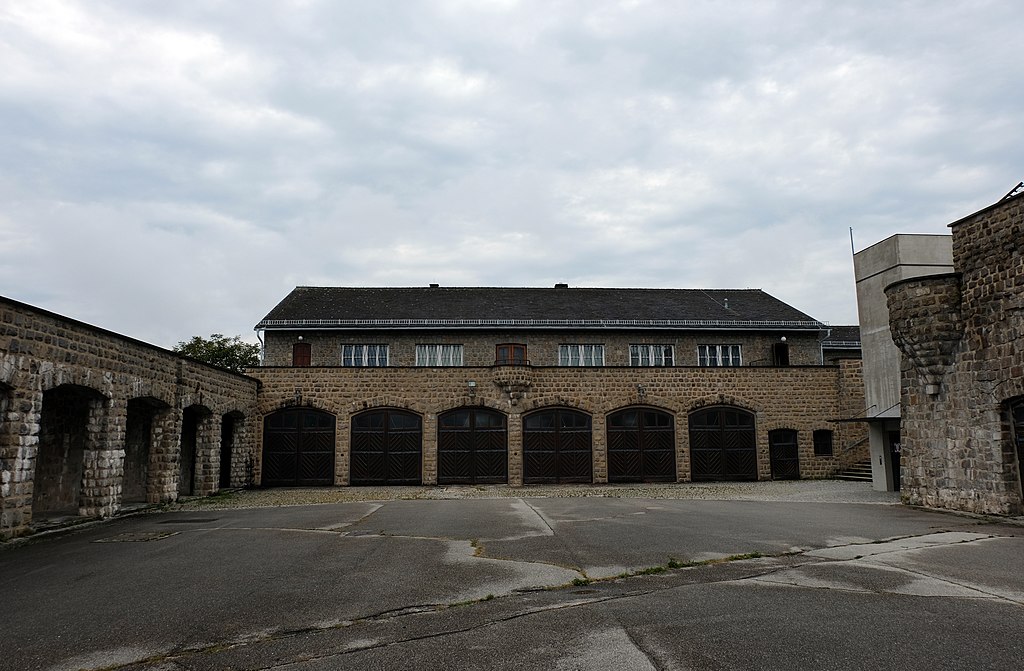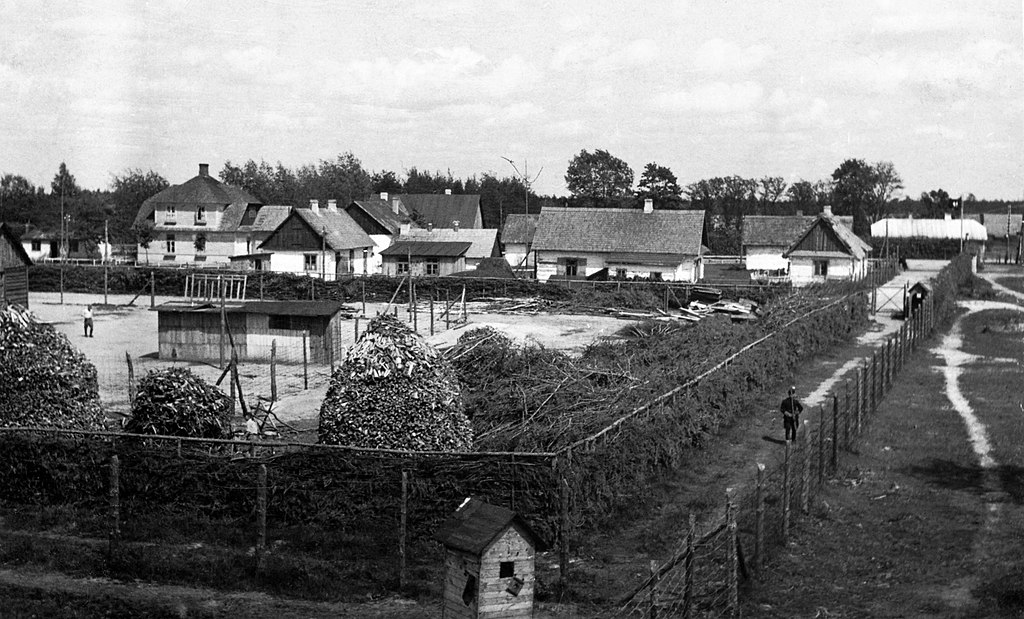Nazi Concentration Camps and Extermination Camps
Between 1933 and 1945 the Nazi regime developed as part of its repressive policies a whole series of camps with various statutes and objectives. The most important system was that of the Nazi concentration camps, which became one of the symbols of the violence of the Third Reich (Nazi Germany), and which served both to bring the German population into line and to terrorize the populations subjected to the German burden throughout the ‘Europe.
Between 1933 and 1945, Nazi Germany and its allies established more than 44,000 Nazi Concentration Camps and Extermination Camps and other detention sites (including ghettos). The perpetrators of these crimes used the facilities for a variety of purposes, including forced labor, detention of people considered enemies of the state, and mass killings.
Many other camps spread across Europe, without being attached to the concentration camp system, which became sprawling during the war. At the same time, other sites were designated as Nazi “camps”: the places devoted to the realization of the final solution, which were in reality killing centers devoid of any detention objective.
Information: some photos are very sensitive to some people. Please leave this page immediately, if you do not wish to view it.
Difference Between Nazi Concentration Camps and Nazi Extermination Camps
A little explanation to distinguish these two types of camp.
Concentration camps
Concentration camps were incarceration and forced labor camps for political enemies of Nazism (communists, trade unionists, resistance fighters) and for “asocials” (criminals under common law, Jehovah’s Witnesses, homosexuals, etc.). The treatment given to detainees was harsh and often led to their death quickly. In some concentration camps there were gas chambers, but not all. They are generally of small capacity.
Extermination camps
Extermination camps are meant to methodically, these camps destroy human life, especially with large capacity gas chambers. These camps employ very little manpower, just enough to take the belongings of deportees and destroy bodies in the crematorium.
The extermination camps were
- Auschwitz-Birkenau in Poland (1.1 million dead)
- Treblinka II in Poland (900,000 dead)
- Bełżec in Poland (436,000 dead)
- Chełmno (German: Kulmhof) in Poland (>150,000 dead)
- Majdanek at Lublin in Poland (> 78,000)
- Sobibor in Poland (minimum 170,000 dead. Other sources speak of 150,000 to 250,000 dead. [3] )
Maly Trostenets in Belarus (40,000 – 65,000 killed. [4] Initially, the number was believed to be between 200,000 and 500,000, but this was the number of people killed in the region, not the camp itself.) - Jasenovac in the Independent State of Croatia , a German client state ruled by the Ustaša movement (estimates range from several tens of thousands to nearly a million dead)
- Furthermore, there were also large execution sites without shelter with only barbed wire barriers such as Bronnaya Gora, in Belarus.
In contrast to the other camps in this list, the Auschwitz, Treblinka and Majdanek camps, in addition to gas chambers and crematoria, also had labor camps set up where healthy prisoners were made available to German industry as slave laborers. For example, IG Farben had established a large industrial complex near Auschwitz (the main reason being that ‘cheap workers’ were available here) where these prisoners had to work in appalling conditions.
Read also: Enigma Machine That Cracked the Nazi Secret Code
Even towards the end of the war, the camps were considered so important by the Nazis that transports of Jews here retained priority, even over transports for the military. After the war it became known that plans had already been made in the context of the New Order for much larger camps with a gigantic ‘processing capacity’ that also had to be cleared by the Slavic peoples.

Wolfmann, CC BY-SA 4.0, via Wikimedia Commons. An old, rusty, empty can found in Auschwitz death camp at the end of WWII. The label reads in German: Zyklon Giftgas! (“Cyclone poison gas“), Cyangehalt 200g (“Cyanogen content 200 grams”), Degesch Deutsche Gesellschaft für Schädlingsbekämpfung (“Degesch German Pest Control Corporation“). Zyklon B, a pesticide developed in Germany in the 1920s, released hydrogen cyanide when exposed to water and heat. From 1942, an odorless version was used to execute about 1.1 million people in gas chambers at Auschwitz-Birkenau, Majdanek, and other camps. Nazi Germany murdered around 6 million Jews during the Holocaust. The photo is from the Auschwitz-Birkenau State Museum, displayed at the Center for Studies of the Holocaust and Religious Minorities in Oslo, Norway.
Killing Techniques
Three different forms of mass murder were carried out in the extermination camps:
- In Belzec, Sobibor and Treblinka, the Aktion Reinhardt camps in the General Government, people were killed by the introduction of petrol engine exhaust into gas chambers.
- In Auschwitz-Birkenau, which was also a concentration camp, the gassings were carried out with the help of hydrogen cyanide gas , which became known as Zyklon B. Shootings were also carried out.
- In Majdanek , which was also a concentration camp, mostly shootings were carried out; gassings were also carried out with the help of carbon monoxide from gas cylinders and later also with Zyklon B.
- In Chelmno , three gas vans with petrol engines stationed there were used; there was no gas chamber there.
- In Maly Trostinez , the victims were mostly shot; gas vans were also used there.
- In Bronnaya Gora the victims were shot.
- People who were no longer able to walk, i.e. mostly very old, sick and dying people, were mostly shot in the Reinhardt camps.

Marcin Białek, CC BY-SA 3.0, via Wikimedia Commons
List of Nazi concentration camps and Nazi Extermination Camps
The camps are grouped by country, taking into account the borders in force between 1939 and 1945. The name of each satellite camp or external kommando is followed, as far as possible, by the name of the firm which employed deportees as workforce. An asterisk in front of a camp name signifies that the camp population was predominantly female.
Read also: Enigma Machine That Cracked the Nazi Secret Code
This list does not claim to be complete. It is estimated that the Nazis created more than 15,000 camps in the occupied territories. There were many small camps which had a very short existence, because they were built during occasional operations against the local populations. On the other hand, this list lacks the many prison camps built in Russia, prison camps in which the living conditions were in every respect comparable to those existing in the worst concentration camps. Finally, this list does not include the numerous ghettos that the Nazis imposed in the occupied territories, although many of these ghettos – such as Theresienstadt, for example – had their own external kommandos (work crews).
This list of this Nazi Concentration Camp was based on information contained in two books:
– Ludo Van Eck’s book was published in 1979 by Kritak (Belgium) “Le livre des Camps” (to my knowledge never reissued but it is still possible to buy it at the Breendonck museum, Belgium)
– The book by Martin Gilbert published in 1992 by Éditions de l’aube/Samuelson, “Atlas de la Shoa”.
Germany
- Bergen-Belsen (2 satellite camps but location unknown)
- Börgermoor (no known satellite camp)
- Buchenwald (174 satellite camps and kommandos)
- Dachau (123 satellite camps and commandos)
- Dieburg (no known satellite camp)
- Esterwegen (1 satellite camp)
- Flossenburg (94 satellite camps and kommandos)
- Gundelsheim (no known satellite camp)
- Neuengamme (96 satellite camps and kommandos)
- Papenburg (no known satellite camp)
- Ravensbruck (31 satellite camps and kommandos)
- Sachsenhausen (44 satellite camps and kommandos)
- Sachsenburg (no known satellite camp)
Read also: Berlin Wall and History From its Rise, Fall and Reunification

Pvt. H. Miller, Public domain, via Wikimedia Commons (Detainees in a state of starvation, in Buchenwald in 1945). “These Russian, Polish, and Dutch slave laborers interned at the Buchenwald concentration camp averaged 160 pounds (72.5kg) each prior to entering camp 11 months ago. Their average weight is now 70 pounds (almost 32 kg). Germany, 04/16/1945”.
Austria
Mauthausen (49 satellite camps and commandos)

Kasa Fue, CC BY-SA 4.0, via Wikimedia Commons. Entrance area to the grounds of the Mauthausen concentration camp – in the background the former commandant’s office, Sept. 2020.
Belgium
- Breendonck (no known satellite camp)
Estonia
- Vivara
Finland
- Kangasjarvi
- Koveri
France
Argeles
Alderney
Brens
Drancy
Gurs
Miles
The Vernet
Natzweiler-Struthof (70 satellite camps and kommandos)
Noah
Recebedou
Rieucros
Rivesaltes
Suresnes
Thill (for these camps, no known satellite camps)
Labor camps for Jews created by the Vichy government in Algeria and Morocco (source: Atlas de la Shoa, Martin Gilbert):
Abadla
Ain el Ourak
Bechar
Berguent
Bogari
Bouarfa
Djelfa
Kenadsa
Meridja
Missour
Tendrara
Holland
- Amersfoort
- Ommen
- Vught (12 satellite camps or kommandos)
- Westerbork
Italy
- Bolzano
- Fossoli
- Risiera di San Sabba (no known satellite camp)
Latvia
- Riga
- Riga-Kaiserwald
- Dundaga
- Eleje-Meitenes
- Jungfernhof
- Lenta
- Spilwe

Bundesarchiv, Bild 101III-Duerr-056-09A / Dürr / CC-BY-SA 3.0, CC BY-SA 3.0 DE, via Wikimedia Commons. Nazi propaganda photograph of Salaspils camp in 1941. Also known as: Kurtenhof, Salaspils Police Prison and Re-Education Through Labor Camp. Location: Salaspils, near Riga, Latvia.
Lithuania
- Kaunas
- Aleksotaskowno
- Palemonas
- Pravieniskes
- Volary
Norway
- Baerum
- Berg
- Bredtvet
- Falstadt
- Tromsdalen
- Ulven
Poland
- Auschwitz/Birkenau – Oswiecim-Brzezinka (extermination camp – 51 satellite camps and commandos)
Auschwitz/Birkenau was the largest and deadliest concentration and extermination camp established by the Nazi regime during World War II. It was located in German-occupied Poland and was responsible for the mass murder of over 1.1 million people, mostly Jews, making it one of the most infamous symbols of the Holocaust.

Gate to Auschwitz I with its Arbeit macht frei sign (“work sets you free”). Logaritmo, Public domain, via Wikimedia Commons

Auschwitz (Birkenau) concentration camp – main administrative building. Dirgela, Public domain, via Wikimedia Commons
- Belzec (extermination camps – 1 satellite camp)
- Bierznow
- Biesiadka
- “Citadel” (The exact name of this camp is unknown to us. It was located near Lvov and thousands of Russian prisoners of war were murdered there)
- Dzierzazna & Litzmannstadt (These two camps were “Jugenverwahrlage”, camps for children. Very many children and adolescents “unfit for assimilation” were interned there before being sent to the extermination camps – see the article on Lebensborn)
- Gross-Rosen – Rogoznica (77 satellite camps and kommandos)
- Huta Komarowska
- Janowska
- Kraków
- Kulmhof – Chelmno (extermination camps – no known satellite camp
- Lublin (prison – no known satellite camp)
- Lwow (Lemberg): now Lviv, Ukraine
- Czwartaki
- Majdanek (extermination camps – 3 known satellite camps)
- Mielec
- Pawiak (prison – no known satellite camp)
- Plaszow (labor camp, later became Majdanek subcamp)
- Poniatowa
- Pustkow (labor camp – no known satellite camp)
- Radogosz (prison – no known satellite camp)
- Radom
- Schmolz
- Schokken
- Sobibor (extermination camps – no known satellite camp)
Sobibor was an extermination camp in eastern Poland during the Holocaust. It operated from May 1942 to October 1943, primarily targeting Jews. Around 250,000 people were killed there. The camp gained notoriety for a prisoner uprising in October 1943, after which the Germans dismantled and concealed the site. It serves as a memorial to the victims today.

Sobibor extermination camp, summer 1943. See page for author, Public domain, via Wikimedia Commons

AnonymousUnknown author, Public domain, via Wikimedia Commons (This summer 1943 photo shows the Nazi death camp Sobibor in Nazi German-occupied Poland). Source: USHMM: Sobibor perpetrator collection
- Stutthof – Sztutowo (40 satellite camps and kommandos)
- Treblinka (extermination camps – no known satellite camp)
- Wieliczka
- Zabiwoko (labor camp – no known satellite camp)
- Zakopane
Russia
(Note: the exact number of concentration camps established in the Soviet Union is unknown. The names given below represent only the main camps. Some of these camps were under Romanian control, such as Akmétchetka or Bogdanovka where, between 21 and on December 31, 1941, 54,000 Jews were executed…)
Akmétchetka
Balanowka
Bar
Bisjumujsje
Bogdanovka
Czwartaki
Daugavpils
Domanievka
Edineti
Kielbasin (ou Kelbassino)
Khorol
Klooga
Lemberg
Mezjapark
Ponary
Rawa-Russkaja
Salapils
Strazdumujsje
Yanowski
Vertugen
(For these camps, without the satellite satellite camp)
Czechoslovakia
Theresienstadt (9 external commands)
- Bohusovice
- Kopisti
- Litomerice-Radobylberg
- Litomerice
- Lovosice (Sputh factory as well as an oil factory)
- Nestemice
- Terezin (Plavy mill)
- Usti (Schicht factory)
- Zalhostice
Yugoslavia
- Banjica
- Brocice
- Chabatz
- Danica
- Dakovo
- Gornja reka
- Gradiska
- Jadovno
- Jasenovac
- Jastrebarsko
- Kragujevac
- Krapje
- Kruscica
- Lepoglava
- Loborgrad
- Sajmite
- Sisak
- Slano
- Slavonska-Pozega
- Stara-Gradiska
- Tasmajdan
- Zemun
- For the campsite assembly, unknown the camp satellites.
Major Nazi concentration and death camps
During World War II, the Nazi regime in Germany established several major concentration and death camps as part of their systematic genocide and persecution of various groups, primarily Jews, but also Romani people, Poles, Soviet POWs, disabled individuals, and others deemed undesirable by the Nazis. Some of the most infamous concentration and death camps include:
- Auschwitz-Birkenau: Located in German-occupied Poland, it was the largest and deadliest concentration and extermination camp. Over 1.1 million people, mostly Jews, were killed there.
- Sobibor: Another extermination camp in Poland, it was responsible for the mass murder of at least 250,000 Jews.
- Treblinka: Also in Poland, it was an extermination camp where approximately 800,000 to 1.2 million Jews were killed.
- Belzec: One of the first extermination camps, located in Poland, where around 600,000 Jews were killed.
- Majdanek: Located in Poland, it was both a concentration and extermination camp, and around 78,000 Jews were killed there, along with tens of thousands of others.
- Chelmno: The first extermination camp, situated in Poland, where about 150,000 Jews and Romani people were killed.
- Dachau: The first concentration camp established in Germany, primarily used for political prisoners, though it later became a forced labor camp for various groups.
- Buchenwald: Another major concentration camp in Germany, holding various prisoners, including Jews, political opponents, and POWs.
These camps were sites of immense suffering, death, and unimaginable horrors, and they serve as grim reminders of the atrocities committed during the Holocaust. It’s crucial to remember this dark period in history to prevent such atrocities from ever happening again.
Sources: PinterPandai, Wikipedia, Britannica, The Holocaust Explained, UNESCO, Birkbeck, University of London
Photo credit: Author: C.Puisney (CC BY-SA 3.0) via Wikimedia Commons
Photo description: Auschwitz-Birkenau, main track / rail – ‘Gateway of Death’



